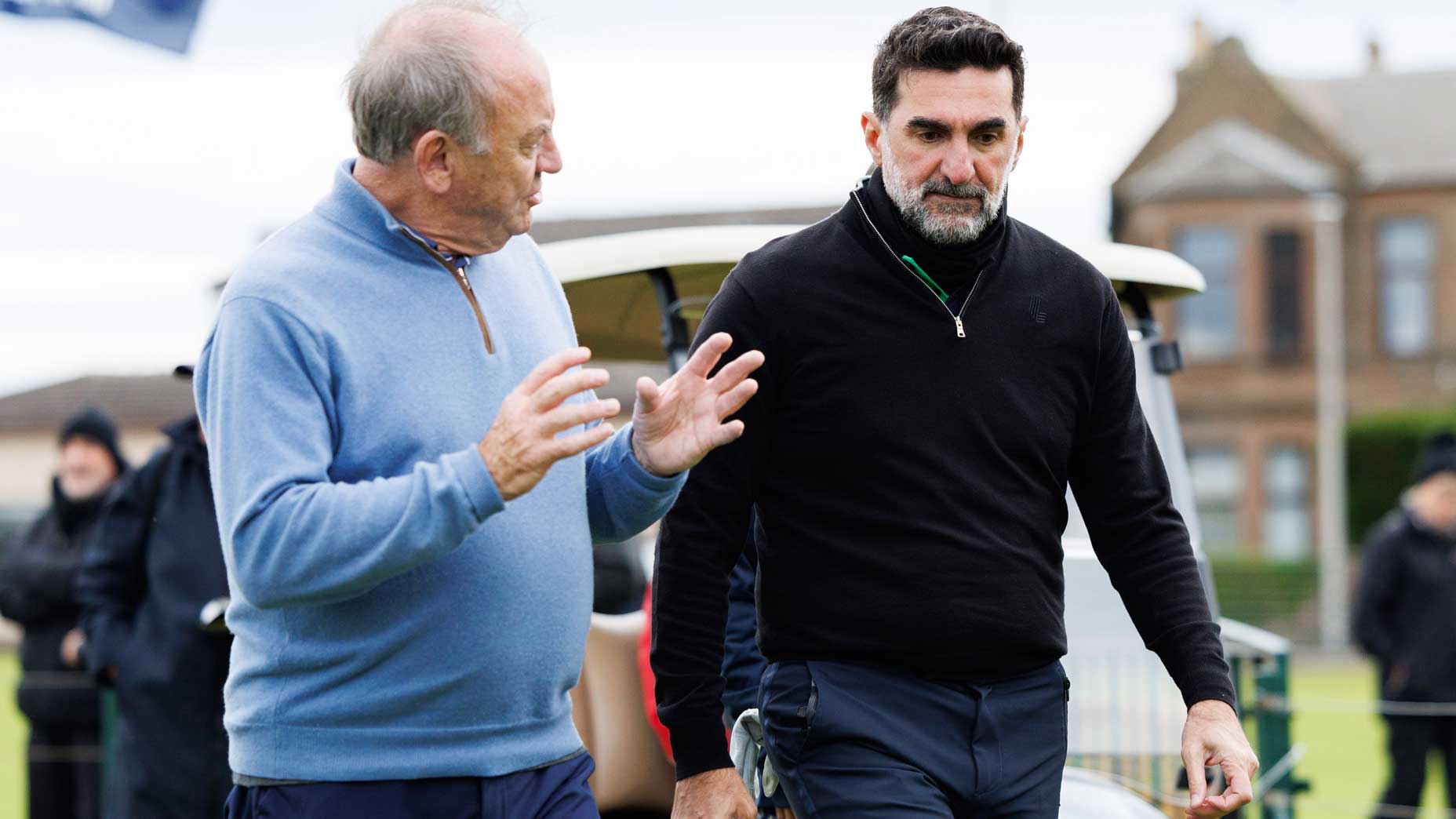Ah, 2023. The year everything changed … again. For the second straight year, we left 2023 with a drastically different perspective of professional golf than we entered. Now, as we look back at the year that was — with LIV major championships, Ryder Cup controversies and oh so many other stories — we’re remembering the 15 biggest moments that defined the year in golf. Let’s get digging.
Biggest Golf Moments of 2023 …
No. 15: Viktor Hovland’s arrival
No. 14: Fowler, Day back in the winner’s circle
No. 13: Brian Harman’s Open rout
No. 12: The Michael Block Party
No. 11: Wyndham Clark’s breakout
No. 10: Lilia Vu’s rise
Biggest Golf Moments of 2023 No. 9: LIV denied OWGR points
On Oct. 10, 2023, some 16 months after its first event, LIV Golf suffered a significant defeat at the hands of some of golf’s most important decision-makers: the OWGR board. It was a procedural decision but one with significant consequences for the global landscape of professional golf — and that’s why it cracks our top 10 stories of the year.
The Official World Golf Ranking (OWGR) is fundamental to the structure of men’s professional golf because it compares players from across tours in an effort to determine the best players as well as those most deserving of berths in its biggest competitions.
This summer and early fall, LIV Golf was still hopeful about its chances. For the fledgling league, acceptance from the OWGR would mark a massive step forward in two areas. The first would be concrete: If LIV golfers were able to receive OWGR points, they’d be able to qualify for the four major championships through LIV, thus removing one barrier that had pros hesitant to join and strengthening LIV’s position in negotiations with the PGA Tour. The second would be something no less important but harder to quantify: legitimacy.
Instead, the October decision deemed LIV’s format too dissimilar to established leagues to allow its inclusion in the ranking. LIV’s events are 54 holes, compared to 72 on most tours. They do not have a 36-hole cut. There is a parallel team element which can occasionally lead to conflicting motives, like when Sebastian Munoz said he’d lagged a putt to protect his team’s score despite what it would mean for him individually. And they have closed fields of 48 players, most of whom had been signed to contracts rather than any sort of qualifying system.
The OWGR made public its letter to LIV CEO Greg Norman and acting COO Gary Davidson. OWGR chairman Peter Dawson spoke to the Associated Press in an effort to depoliticize the announcement, making the case that the format was impossible to rank equitably.
“We are not at war with them,” Dawson told the AP. “This decision not to make them eligible is not political. It is entirely technical. LIV players are self-evidently good enough to be ranked. They’re just not playing in a format where they can be ranked equitably with the other 24 tours and thousands of players trying to compete on them.”
Dawson made it clear that the most significant impediment to qualifying for points was a lack of turnover. This “closed shop” element of LIV meant guaranteed survival to those players on contract, regardless of performance. It also meant a lack of turnover and a lack of access to the league for outsiders. While LIV only guaranteed its top 24 players would keep their seats for the 2024 season, pros like Phil Mickelson (39th of LIV’s 50 players to earn points), Lee Westwood (45th) and Martin Kaymer (49th) were under contract and thus avoided relegation.
“Dustin Johnson, Sergio Garcia, of course they should be in the ranking,” Dawson added, signaling a future opportunity for LIV’s inclusion. “We need to find a way to get that done. I hope that LIV can find a solution — not so much their format; that can be dealt with through a mathematical formula — but the qualification and relegation.”
The OWGR had taken other steps to avoid conflicts of interest. Three board members — PGA Tour commissioner Jay Monahan, DP World Tour CEO Keith Pelley and Keith Waters of the International Federation of PGA Tours — recused themselves from the decision. But that didn’t mean that LIV would accept its decision without rebuttal.
“OWGR’s sole objective is to rank the best players across the globe. Today’s communication makes clear that it can no longer deliver on that objective,” LIV responded as part of a statement, taking a direct shot at the OWGR’s legitimacy.
“Professional golf is now without a true or global scoring and ranking system,” the statement added. “There is no benefit for fans or players from the lack of trust or clarity as long as the best player performances are not recognized.”
The ripple effects continue to be felt as 2023 comes to a close.
The PGA Tour, DP World Tour and PIF are in ongoing negotiations no doubt affected by LIV’s lack of OWGR points and major championship access. LIV, which held its first “Promotions” event in December, continues to consider alternative formats that would be more appealing to players, fans and OWGR board members. Its players continue to slide down the rankings in the meantime; behind recent signee Jon Rahm (World No. 3) there are recent major champs Brooks Koepka (No. 17) and Cameron Smith (No. 23) with no other LIV golfers inside the top 60. While six LIV players (Rahm, Smith, Koepka, Dustin Johnson, Bryson DeChambeau and Phil Mickelson) are exempt into all four of next year’s majors based on recent wins, when this year’s majors come around they may not include names like Joaquin Niemann or Talor Gooch.
In other words, you can expect this discourse to continue into the new year.
